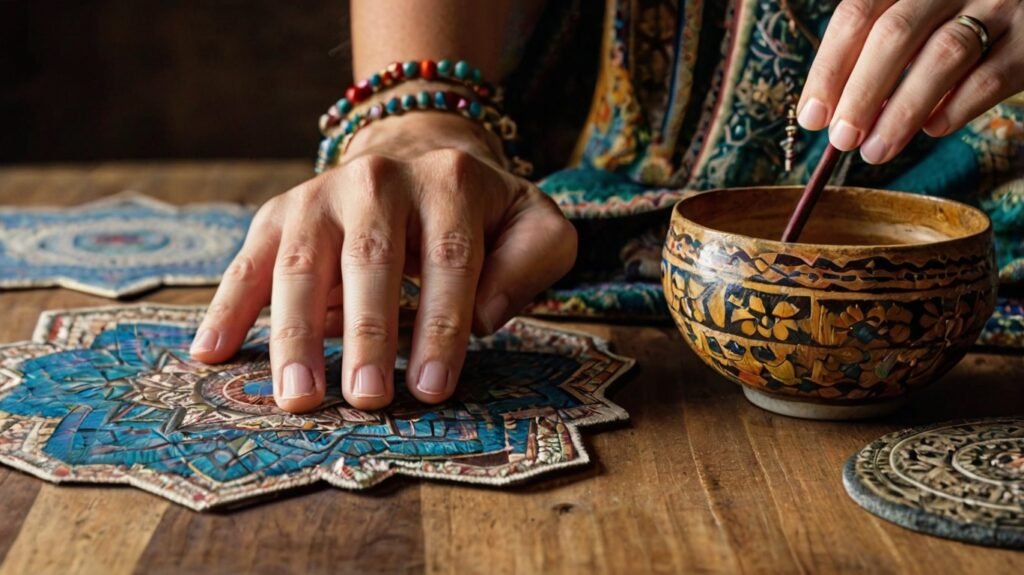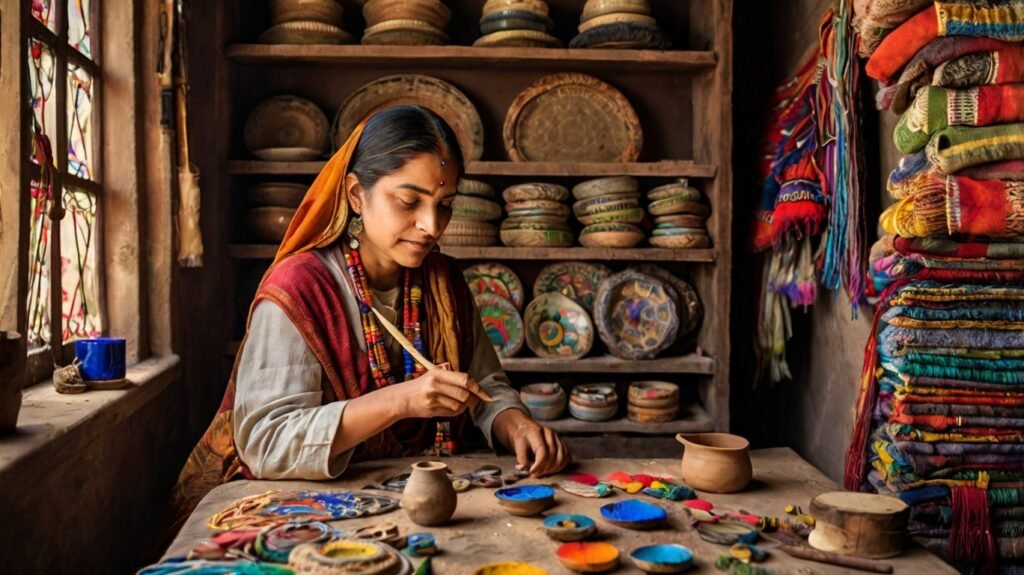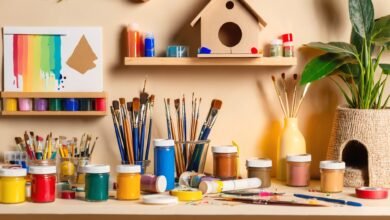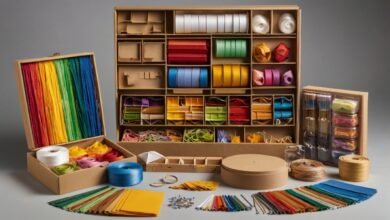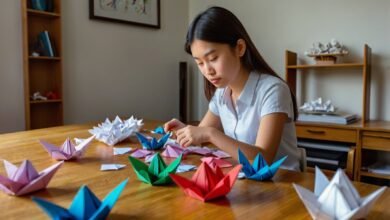Realfoot Arts and Crafts
Realfoot Lake Arts and Crafts: A Comprehensive Exploration of a Unique Cultural Heritage

Introduction:
Realfoot Lake, nestled in the picturesque landscape of northwestern Tennessee, is more than just a natural wonder. Its formation in the early 19th century, following a series of significant earthquakes, left behind a unique wetland environment that has profoundly influenced the local Realfoot Arts and Crafts. This article delves into the rich tapestry of Realfoot Lake’s artistic heritage, examining its historical context, traditional crafts, contemporary innovations, community involvement, and offering practical advice for those interested in exploring and supporting this vibrant cultural scene. Click here
“Historical Context”
Formation and Early Inhabitants:
Realfoot Lake was born from the seismic upheaval of the New Madrid earthquakes, which reshaped the landscape and created the lake’s distinctive wetlands. This dramatic geological event marked a turning point in the region’s natural history, laying the foundation for the unique cultural and artistic traditions that would follow. The lake and its surroundings became home to various indigenous peoples, notably the Chickasaw, whose art and craftsmanship were deeply intertwined with their environment.
Before the arrival of European settlers, the Chickasaw people had a rich tradition of crafting items that were both functional and symbolic. Their art included pottery, beadwork, and woven goods, all of which were imbued with cultural and spiritual significance. The intricate designs and techniques used in their crafts reflected their deep connection to the natural world and their understanding of its rhythms and patterns.
European Influence and Cultural Syncretism:
The arrival of European settlers in the early 19th century introduced new artistic influences to the region. European immigrants brought with them a variety of craft traditions, including quilting, woodworking, and metalworking. This period marked the beginning of a cultural fusion, where European techniques and styles were blended with indigenous practices.
European settlers adapted their crafts to incorporate local materials and motifs, creating a hybrid style that celebrated both their heritage and the new environment they had come to inhabit. This syncretism enriched the local arts scene, resulting in a diverse array of craft forms that reflected the complex cultural landscape of the region.
The Impact of Modernization:
As the 20th century progressed, modernization and industrialization brought significant changes to the region. Traditional crafts faced new challenges as mass production and commercialization began to dominate. However, the resilience of local artisans and their commitment to preserving traditional techniques ensured that these crafts continued to thrive. The late 20th and early 21st centuries saw a resurgence of interest in handmade, artisanal products, leading to a renewed appreciation for the region’s rich craft heritage.
“Traditional Crafts”
Pottery:
Techniques and Materials:
Pottery in the Realfoot Lake region is characterized by its use of locally sourced clays, which vary in color and texture. Artisans typically employ hand-building techniques, such as coiling and pinching, to shape their creations. These methods allow for a high degree of individuality and creativity, resulting in unique pieces that are both functional and artistic.
The glazing process often involves natural materials, which impart distinctive colors and textures to the pottery. Traditional glazes might include ash, clay, or minerals found in the local environment. The firing techniques used can range from simple pit firing to more controlled kiln firing, each affecting the final appearance of the pottery.
Design and Symbolism:
Designs on Realfoot Lake pottery frequently draw inspiration from the surrounding natural landscape. Representing the flora and fauna of the area, plants, animals, and abstract patterns are common themes. These designs often carry symbolic meanings, representing elements of local mythology or spiritual beliefs.
Pottery serves both practical and ceremonial purposes. Functional pieces include bowls, vases, and pots used in everyday life, while ceremonial items might feature more elaborate designs and serve specific cultural or spiritual functions.
Basketry:
Materials and Methods:
Basket weaving is a traditional craft that utilizes a variety of natural materials, such as river cane, sweetgrass, and willow. Coiling, plaiting, and twining techniques help artists make various baskets in many different shapes and sizes. Each method contributes to the basket’s final form and strength.
The choice of materials and techniques often reflects the intended use of the basket. For example, coiled baskets are typically more flexible and durable, making them suitable for storage, while twined baskets may be used for gathering or ceremonial purposes.
Patterns and Uses:
Patterns in basketry can range from simple, functional designs to intricate, decorative motifs. Common themes include geometric patterns, natural imagery, and symbolic representations. The patterns are often created using dyed or natural materials, with colors and designs that reflect the local environment and cultural traditions.
Baskets serve a variety of functions, from practical uses like carrying and storage to decorative purposes. Some baskets are created specifically for ceremonial or ritual use, featuring designs that hold special significance within the community.
Woodworking:
Craftsmanship and Techniques:
Woodworking in the Realfoot Lake region is deeply rooted in tradition, with artisans using a range of techniques to create functional and decorative items. Hand-carving, joinery, and lathe work are common methods employed by local woodworkers. The choice of materials, such as hardwoods from the surrounding forests, adds to the uniqueness of each piece.
Artisans often create a variety of items, including furniture, carvings, and practical tools. Each piece reflects the artisan’s skill and creativity, with designs that range from simple and utilitarian to intricate and ornamental.
Designs and Influence:
Woodworking designs in the Realfoot Lake region often draw inspiration from the natural surroundings. Carvings may feature local wildlife, while furniture designs might incorporate elements of the region’s landscape. The use of natural materials and traditional techniques ensures that each piece is not only functional but also a reflection of the local environment.
Woodworkers in the region often strive to maintain traditional methods while exploring new design possibilities. This balance between tradition and innovation helps to keep the craft vibrant and relevant.
“Contemporary Innovations”
Modern Artistry:
In recent years, contemporary artists in the Realfoot Lake region have begun to incorporate modern techniques and styles into their traditional crafts. This evolution reflects a broader trend toward blending traditional practices with contemporary aesthetics, resulting in a dynamic and diverse craft scene.
Contemporary artists may experiment with new materials, techniques, and design concepts, pushing the boundaries of traditional crafts while honoring their historical roots. This innovation helps to keep the craft relevant and appealing to new audiences, ensuring its continued vitality.
Fusion of Styles:
The fusion of traditional and modern styles is a hallmark of contemporary craftsmanship in the Realfoot Arts and Crafts Lake region. Artists may blend traditional techniques with modern design elements, creating pieces that reflect both historical and contemporary influences.
For example, pottery might incorporate abstract designs or unconventional glazing methods, while woodworking may feature mixed-media elements or contemporary forms. This fusion of styles not only enriches the local craft scene but also provides new opportunities for artistic expression.
Artisanal Collaborations:
Collaborations between traditional artisans and contemporary artists have become increasingly common in the Realfoot Arts and Crafts Lake region. These partnerships often result in innovative projects that push the boundaries of traditional craft while preserving essential techniques and values.
Collaborative projects might include joint exhibitions, public art installations, or community workshops. These initiatives provide opportunities for artists to share their skills, exchange ideas, and create new work that reflects a blend of traditional and contemporary influences.
“Community Engagement”
Local Craft Fairs and Festivals:
Craft fairs and festivals play a crucial role in celebrating and promoting the arts of the Realfoot Arts and Crafts Lake region. These events provide a platform for local artisans to showcase their work, engage with the community, and share their skills with visitors.
Local craft fairs often feature a wide range of handmade items, from pottery and basketry to woodworking and textiles. Festivals may include workshops, demonstrations, and performances, creating a lively and interactive environment that highlights the region’s artistic heritage.
Educational Programs:
Educational programs are essential for preserving and passing on traditional crafts. Local organizations, schools, and cultural centers offer workshops and classes that teach traditional techniques to new generations. These programs aim to keep the craft traditions alive and relevant, ensuring that future artisans can continue the legacy.
Educational initiatives may include hands-on workshops, lectures, and demonstrations. By providing opportunities for learning and skill development, these programs help to foster a new generation of craftspeople and ensure the continued vitality of the region’s artistic traditions.
Supporting Local Artisans:
Supporting local artisans is crucial for the sustainability of the craft community. There are several ways to contribute to the success of local craftspeople, including purchasing handmade items, attending craft fairs, and promoting artisans through social media and other channels.
Buying handmade crafts directly from artisans or local markets ensures that your money goes directly to the creators, helping to sustain their craft and support their livelihoods. Additionally, promoting local artisans by sharing their work with friends and family or through social media can help raise awareness and generate interest in their crafts.
“Practical Advice for Visitors and Supporters”
Visiting Realfoot Lake:
Planning Your Trip:
When planning a visit to Realfoot Lake, it’s essential to consider the timing of your trip to coincide with local craft events and festivals. Check local event calendars and plan your itinerary to include visits to craft shops, galleries, and artisan studios.
Consider reaching out to local tourist information centers or cultural organizations for recommendations on places to visit and events to attend. Many artisans offer tours or demonstrations, providing an in-depth look at their techniques and creative processes.
Engaging with Artisans:
Engaging with local artisans is a rewarding way to experience the crafts of Realfoot Lake. Attend workshops or participate in craft-related events to learn more about traditional techniques and gain a deeper appreciation for the skills involved. Don’t hesitate to ask questions and learn about the history and significance of the work.
Interacting with artisans provides valuable insights into their creative processes and helps build a deeper connection to the region’s craft traditions. Additionally, it supports artisans by showing interest in their work and contributing to the local craft economy.
“Supporting the Craft Community”
Purchasing Handmade Items:
One of the most direct ways to support local artisans is by purchasing handmade items. Handmade crafts are often unique and carry a personal touch that mass-produced goods lack. By buying directly from artisans or local markets, you help sustain their craft and support their livelihoods.
Purchasing handcrafted craft items should be worth the time taken to determine the quality and craftsmanship of the item. Handmade items often reflect the skill and creativity of the artisan, making them valuable both as functional objects and as works of art.
Promoting Craftsmanship:
Promoting the Realfoot Arts and Crafts Lake helps raise awareness and generate interest in local craftsmanship. Share your experiences on social media, write reviews, or recommend local artisans to friends and family. By raising the profile of the region’s crafts, you contribute to the sustainability and growth of the craft community.
Supporting local artisans through promotion and advocacy helps ensure that their work reaches a broader audience and that their contributions to the local culture are recognized and appreciated.
“Positive Results from Finding ‘Actualfoot Lake’s Arts and Crafts”
Exploring Realfoot Lake’s arts and crafts offers a multitude of positive effects, enriching both individuals and the community in several meaningful ways. Here are some key benefits:
Cultural Preservation and Appreciation:
Delving into Realfoot Arts and Crafts Lake’s helps preserve and celebrate the rich cultural heritage of the region. By engaging with traditional and contemporary crafts, individuals gain a deeper appreciation for the historical and cultural contexts that shape these art forms. This engagement fosters respect for indigenous practices and the fusion of historical influences, ensuring that traditional techniques and stories are not lost to time.
Economic Benefits for Local Artisans:
Supporting local artisans through purchasing handmade crafts and attending craft fairs directly benefits the regional economy. It provides artisans with financial stability and encourages the continued practice of their craft. This economic support is crucial for sustaining local businesses and creating job opportunities within the community, contributing to economic growth and stability.
Enhanced Community Engagement:
Craft fairs, workshops, and festivals foster community spirit and engagement. These events bring people together, creating opportunities for social interaction and cultural exchange. They also promote a sense of pride and collective identity among residents, strengthening community bonds and encouraging collaboration among artists, organizers, and visitors.
Educational Opportunities:
Realfoot Arts and Crafts of Realfoot Lake offers valuable educational experiences for both locals and visitors. Workshops and demonstrations provide hands-on learning opportunities, allowing participants to acquire new skills and knowledge about traditional and contemporary crafting techniques. This educational aspect helps to pass on craft traditions to new generations and enhances the general understanding of the region’s cultural heritage.
Tourism and Awareness:
Tourism centered around Realfoot Arts and Crafts highlights the unique cultural offerings of Realfoot Lake, attracting visitors who are interested in exploring local artistry. This increased awareness can lead to a greater appreciation of the region’s cultural assets and encourage sustainable tourism practices. By showcasing the area’s artistic heritage, tourism helps to generate interest and appreciation for Realfoot Arts and Crafts Lake’s distinctive crafts and traditions.
Personal Enrichment:
Engaging with Realfoot Arts and Crafts can be a personally enriching experience. Whether through creating art, collecting handmade items, or simply appreciating the craftsmanship, individuals gain a sense of fulfillment and connection to the region’s cultural legacy. The process of exploring and learning about these crafts can also be a source of inspiration and creativity, enhancing personal well-being and satisfaction.
Support for Sustainable Practices:
Many contemporary artisans in Realfoot Lake are committed to sustainable practices, using eco-friendly materials and methods in their work. By supporting these artisans, individuals contribute to environmental sustainability and promote responsible crafting practices. This positive impact extends beyond the local community, fostering a broader awareness of sustainable consumption and production.
Encouragement of Innovation:
The dynamic interplay between traditional and contemporary crafting techniques encourages innovation and creativity within the arts community. By exploring and supporting new approaches to craft, individuals help drive artistic evolution and experimentation. This creative spirit not only enriches the local craft scene but also contributes to the broader field of artisanal and cultural innovation.
In summary, exploring and supporting the Realfoot Arts and Crafts Lake yields numerous positive effects, from preserving cultural heritage and boosting the local economy to fostering community engagement and personal enrichment. Engaging with these crafts enriches the cultural landscape and ensures that the artistic legacy of Realfoot Lake continues to thrive and inspire.
Conclusion:
Realfoot Arts and Crafts Lake represent a rich and diverse cultural heritage that reflects the region’s unique natural environment and historical influences. From traditional pottery and basketry to contemporary innovations and community engagement, the craftsmanship of Realfoot Lake offers a fascinating glimpse into the intersection of history, environment, and artistic expression.
By exploring these crafts, supporting local artisans, and engaging with the craft community, visitors and enthusiasts can contribute to the preservation and celebration of this vibrant cultural legacy. Realfoot Arts and CraftsLake’s continue to evolve, blending traditional techniques with modern aesthetics and ensuring that the region’s artistic heritage remains a vital and dynamic part of its cultural landscape.



